Introduction
Pro forma financial statements serve as a roadmap for businesses, charting a course for future financial performance based on assumptions and hypothetical scenarios. These forward-looking statements empower businesses to anticipate the impact of various strategic decisions, acting as a critical tool for evaluating potential financial outcomes. They embody the practice of financial forecasting, which involves predicting cash flows, income statements, and balance sheets.
By simulating different financial actions and market conditions, pro forma statements help businesses plan for growth, manage risks, and make informed decisions about investments and operations. Moreover, they provide a foundation for crafting budgets and business plans that align with long-term objectives while considering short-term financial necessities.
In this article, we will explore the types and components of pro forma financial statements, as well as the steps involved in creating them. We will also delve into the importance of analyzing these statements, along with the use of financial ratios and metrics for evaluation. Additionally, we will discuss the real-world applications of pro forma statements, regulatory considerations, and best practices for accurate forecasting.
Join us as we dive into the world of pro forma financial statements, uncovering their significance in strategic financial planning and decision-making.
What Are Pro Forma Financial Statements?
Pro forma financial statements serve as a roadmap for businesses, charting a course for future financial performance based on assumptions and hypothetical scenarios. These forward-looking statements empower businesses to anticipate the impact of various strategic decisions, acting as a critical tool for evaluating potential financial outcomes. They embody the practice of financial forecasting, which involves predicting cash flows, income statements, and balance sheets.
By simulating different financial actions and market conditions, pro forma statements help businesses plan for growth, manage risks, and make informed decisions about investments and operations. Moreover, they provide a foundation for crafting budgets and business plans that align with long-term objectives while considering short-term financial necessities.
Types of Pro Forma Financial Statements
Pro forma financial statements are crucial tools for assessing a company's future financial health and performance. The three primary types of pro forma statements are:
-
Pro Forma Income Statement: This document, also known as a profit and loss statement, forecasts the revenue, expenses, and net income for a company. It allows stakeholders to evaluate a company's profitability over a specific period.
-
Pro Forma Balance Sheet: Offering a snapshot of a company's financial standing at a particular point in time, this statement lists assets, liabilities, and shareholders' equity. The fundamental accounting equation here is Assets = Liabilities + Shareholders' Equity. Understanding the balance sheet is vital for analyzing a company's solvency and capital structure.
-
Pro Forma Cash Flow Statement: This report outlines all cash inflows and outflows, categorizing them into operations, investing, and financing activities. It's essential for understanding how a company generates cash and its ability to sustain and grow operations.
For instance, under the leadership of a proficient governor, Cabletron Systems flourished by effectively managing these financial statements, which contributed to its recognition as a leading provider of networking solutions. Likewise, SAP's recent settlement of bribery charges, as reported by the US Justice Department, underscores the importance of transparency and accuracy in financial reporting, which pro forma statements can help achieve.
Investors and CFOs alike rely on these documents for a clear understanding of a company's financial trajectory, ensuring informed decision-making. As Omar Choucair of Trintech suggests, the accuracy of financial statements begins with fundamental financial reporting and understanding the interrelationship between different financial documents.
It's also essential to note that while these statements are interconnected, each serves a distinct purpose and provides unique insights into the company's financial affairs, much like how Berkshire Hathaway CEO Warren Buffett assesses the value of a business beyond its immediate financials.
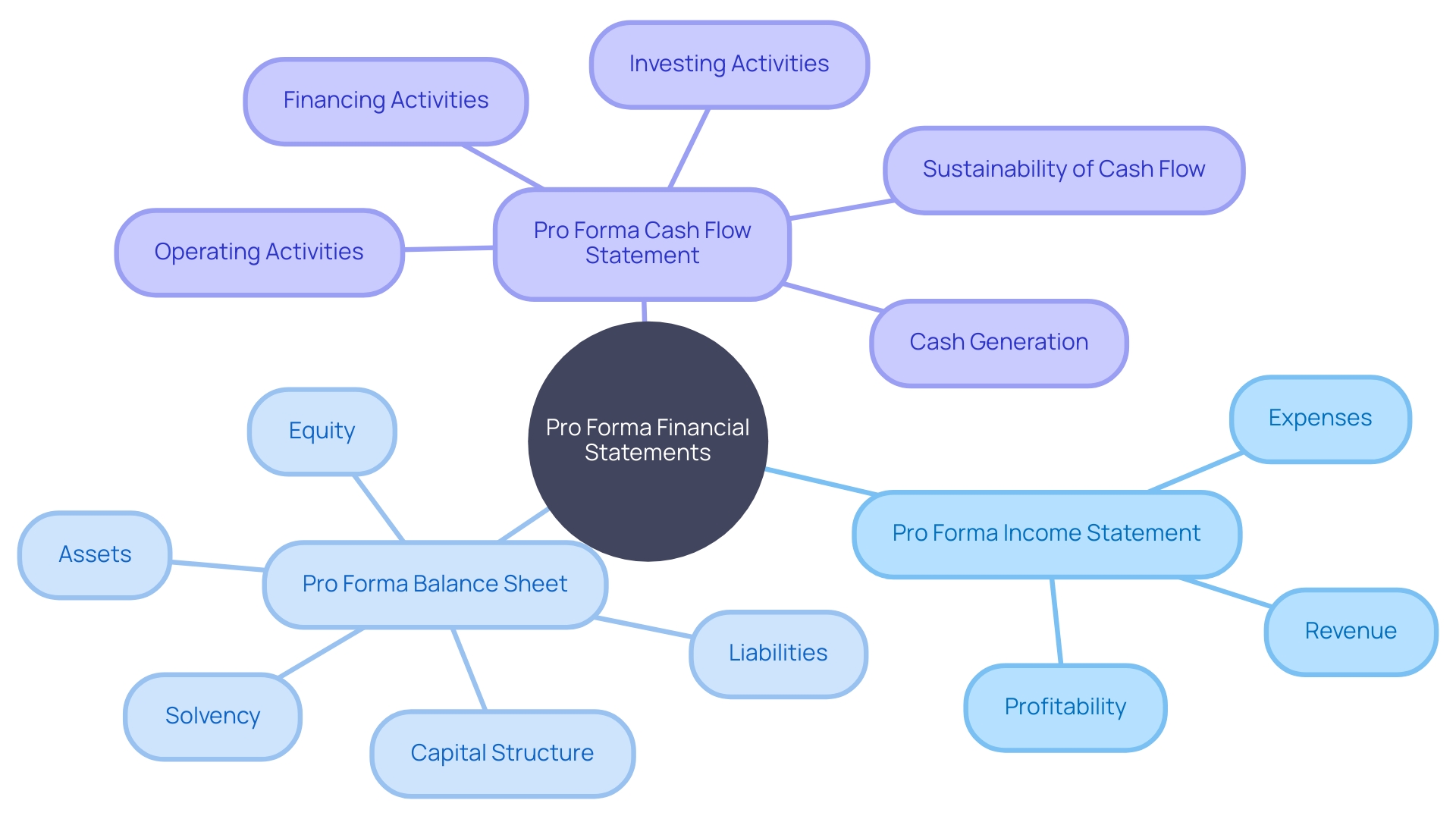
Components of Pro Forma Financial Statements
Pro forma financial statements are pivotal for CFOs to anticipate financial trends and facilitate strategic planning. These projections are more than just speculative; they integrate revenue projections, expense forecasts, adjustments for assets and liabilities, and cash flow estimations to provide a comprehensive view of the company's potential financial trajectory. Revenue projections are crucial as they form the basis for estimating the future cash inflows from sales and services.
Expense forecasts, on the other hand, provide insight into the prospective outflows, ensuring that the business can sustain its operations and growth. Asset and liability adjustments are necessary to account for any anticipated changes in the company's balance sheet, which may affect shareholder equity and investment decisions. Finally, cash flow estimations offer a granular look into the liquidity of the business, detailing the movement of cash through operations, financing, and investing activities.
By carefully assembling these components, CFOs can craft financial statements that reflect not only current performance but also future possibilities, thereby supporting informed decision-making and long-term strategic initiatives.
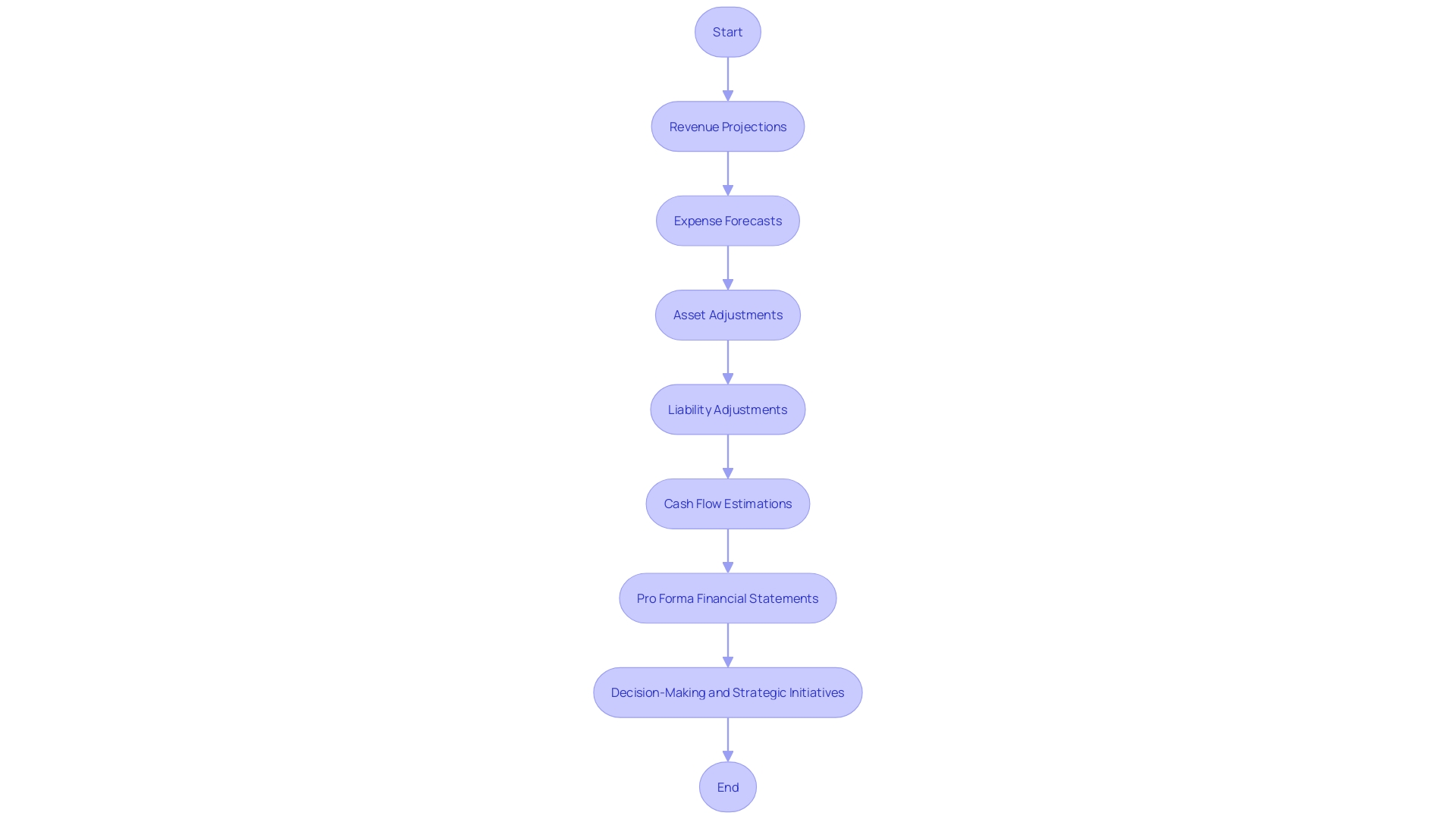
Pro Forma Income Statement
A Pro Forma Income Statement, also known as a Profit and Loss (P&L) statement, is a critical financial document that forecasts a company's revenues, expenses, and net income. This statement serves as a valuable tool for businesses to predict their financial performance for a designated period. It includes key components such as operating expenses, which are vital for the day-to-day running of a company but not directly tied to the production of goods and services.
Understanding these figures is essential for making informed business decisions and strategizing for future growth and profitability.
By summarizing costs and revenues, a Pro Forma Income Statement provides a snapshot of a company's potential profitability. It's an important aspect of financial reporting that can be scrutinized by internal and external entities including the Internal Revenue Service. Therefore, ensuring accuracy in this report is paramount for reflecting the true financial health of a business.
For entrepreneurs and small business owners, the Pro Forma Income Statement is more than just a financial projection; it's a reflection of the company's future prospects and operational efficiency. It's a tool that encapsulates the financial implications of business decisions and investments, highlighting the balance between immediate profitability and long-term value creation.

Pro Forma Balance Sheet
A pro forma balance sheet is an indispensable financial tool, projecting a company's financial position at a future date. This forward-looking statement estimates a company's assets, liabilities, and shareholders' equity. By analyzing these projections, businesses can determine their potential financial stability and solvency.
The balance sheet equation—assets equal liabilities plus shareholders' equity—remains the cornerstone of this financial document. It's a reflection of a company's financial integrity, used by business owners for a swift assessment of financial health and by investors and lenders to evaluate creditworthiness.
For instance, a significant share transfer, such as the 1,026,788 shares moved from a GRAT to a Family Trust on February 12, 2024, which falls under Rule 16a-13 and disclaims beneficial ownership except for pecuniary interest, would be critical to reflect accurately on a pro forma balance sheet. Similarly, the precise reporting of share sales, with detailed prices and quantities, exemplifies the meticulous detail required for such financial statements.
Recent legislative changes, such as those in the Consolidated Appropriations Act, 2023, emphasize the importance of clear and detailed financial disclosures. The Act instructs the Commission to ensure that purchasers of complex financial products, like RILAs, receive information necessary for informed decision-making. This aligns with the ethos behind pro forma balance sheets—providing a clear, comprehensive view of a company's anticipated financial position, empowering stakeholders to make knowledgeable financial decisions.
Pro Forma Cash Flow Statement
A pro forma cash flow statement provides a forward-looking estimate of a company's cash inflows and outflows over a specified period, offering a granular view of financial health. This statement breaks down the cash flow into three main segments: operating, investing, and financing activities. Operating activities, in particular, reflect the cash generated or used by the company's core business operations.
This includes cash received from customers, paid to suppliers, and spent on day-to-day expenses such as labor and taxes. Such meticulous tracking allows businesses not only to anticipate and strategize for potential cash deficiencies or excesses but also to understand the overall operational efficiency and financial viability.
For instance, positive cash flow from operations indicates a firm's competency in generating sufficient cash through its ongoing activities, negating the need for external funding. Conversely, negative cash flow signifies a reliance on additional cash sources to maintain business continuity. Since being mandated in 1987, the statement has offered an unobscured view of cash movements, addressing many of the shortcomings associated with traditional cash flow estimates.
In today's dynamic business environment, understanding the distinction between cash flow and profit is crucial. While both are key financial performance indicators, cash flow specifically deals with the actual movement of cash within a business. Ensuring a steady cash flow and avoiding shortages is paramount to a company's survival, as even a profitable business can fail without sufficient liquidity.
Recent news and economic trends underscore the importance of meticulous cash flow management. Reports of large settlements, such as SAP's agreement to pay over $220 million to resolve bribery charges, highlight how unforeseen expenses can impact a company's cash reserves. Additionally, with tax deadlines looming and the potential for unexpected tax liabilities, businesses must regularly assess and plan their cash positions to avoid financial pitfalls.
Statistics from business financial data underline the significance of monitoring cash flow, with free cash flow serving as a fundamental indicator of the amount of cash available to a company after essential payments. This metric is instrumental in valuation analyses, such as the discounted cash flow model, emphasizing its role in strategic planning and investment decisions. By integrating these insights into cash flow management strategies, CFOs can better navigate the complexities of financial planning and maintain a robust bottom line.
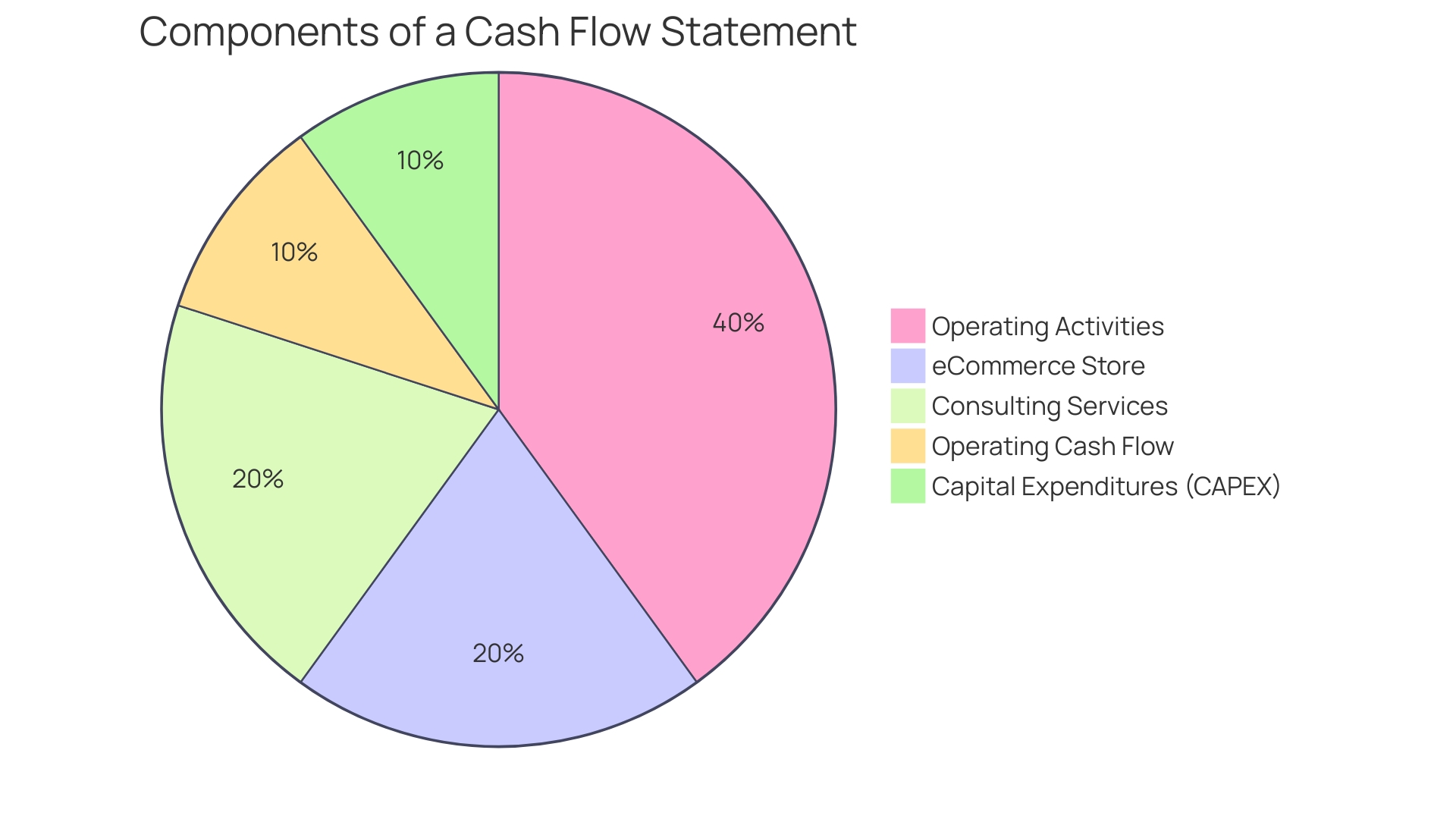
How to Create Pro Forma Financial Statements
The preparation of pro forma financial statements is a multifaceted process that goes beyond simple number crunching. It begins with an analysis of historical financial data to lay the groundwork for what's to come. Next, it requires a combination of well-informed assumptions and strategic forecasting to predict future conditions and events that may affect the company's financial position.
Adjustments are then meticulously made for any anticipated changes that could influence the company's financial trajectory, such as market shifts or internal investments. This ensures that the resulting financial projections – the balance sheet, income statement, and cash flow statement – are not only comprehensive but also provide a realistic financial roadmap for the organization.
For instance, a cash flow statement is pivotal, detailing every cash inflow from operations and external investments, and outflows covering business activities and investments. It's a tool to evaluate operational efficiency, indicating whether a company sustainably generates enough cash or leans heavily on outside financing.
Similarly, the statement of change in equity, also known as the statement of retained earnings, sheds light on changes in the company’s equity. This includes net profits, losses, and dividends, offering a clear picture of the financial decisions affecting shareholder value.
A complete financial report encompasses these elements and more, providing stakeholders with a transparent view of the company’s fiscal health. Governed by international financial reporting standards and generally accepted accounting principles, these documents ensure both accuracy and integrity in financial reporting.
Incorporating insights from financial experts and leveraging the latest technological advancements can enhance the reliability of the financial statements. As Omar Choucair of Trintech emphasizes, accurate financial statements begin with clean books that reflect up-to-date costs, analyzed through the prism of well-informed management.
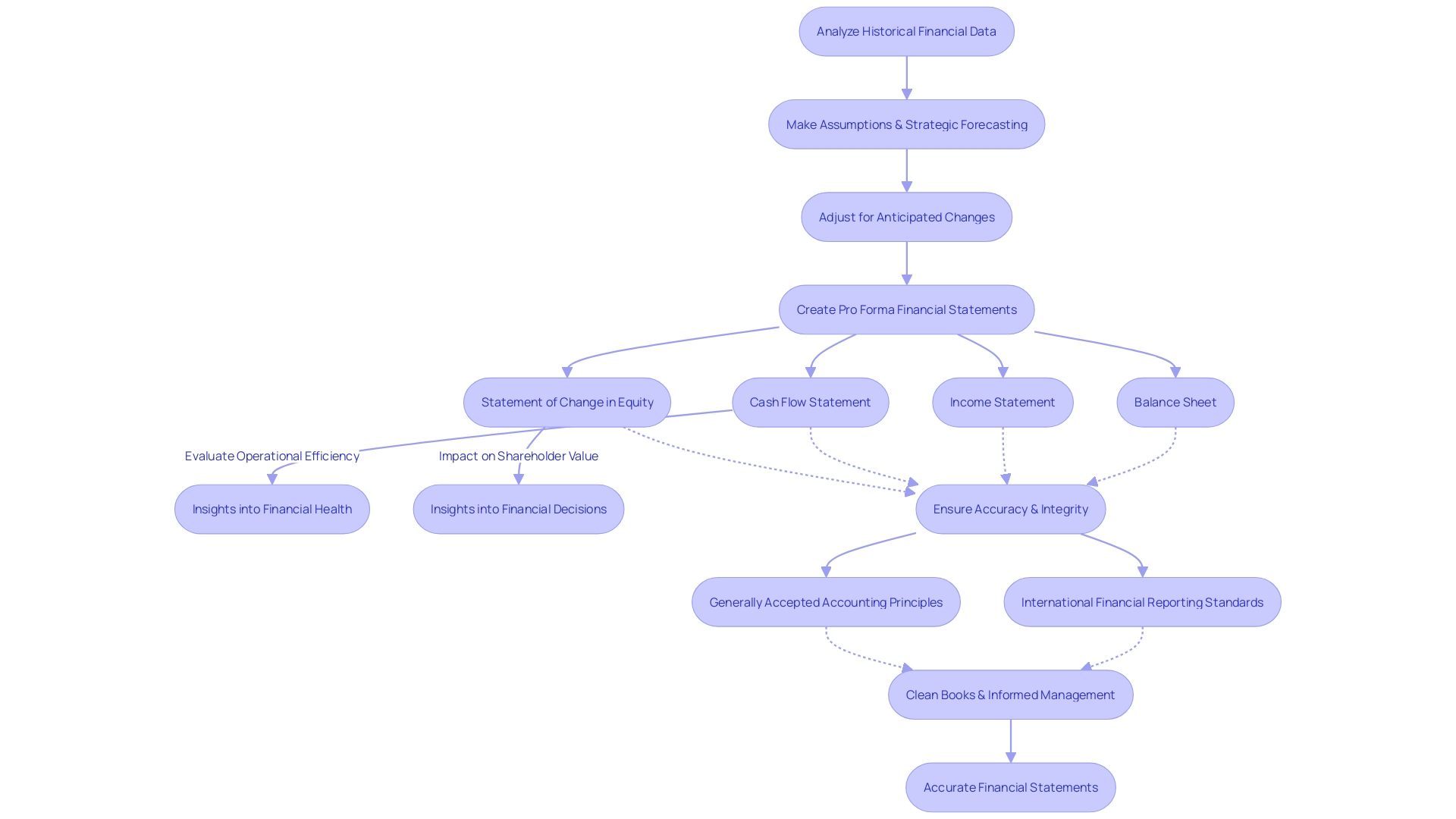
Steps to Create a Pro Forma Income Statement
Creating a pro forma income statement is a strategic exercise that involves more than just crunching numbers; it's a forward-looking process that requires a deep understanding of past performance, industry trends, and business strategy. Start by meticulously collecting historical revenue and expense data, which will serve as the bedrock of your projections. Analyze these figures to discern patterns and trends that could influence future financial outcomes.
Incorporating assumptions for future revenue and expense growth is critical, and these should be grounded in realistic expectations based on both internal and external factors. Anticipate changes in the business landscape, such as emerging technologies or shifts in consumer behavior, as these will impact your projections. With these insights, adjust your figures to reflect potential increases or decreases in costs and income.
Finally, synthesize all this information to calculate your projected net income. This figure crystallizes the anticipated profitability of your company and is essential for making informed strategic decisions. It's not just about estimating future success—it's about preparing your business to meet it head-on with clarity and confidence.
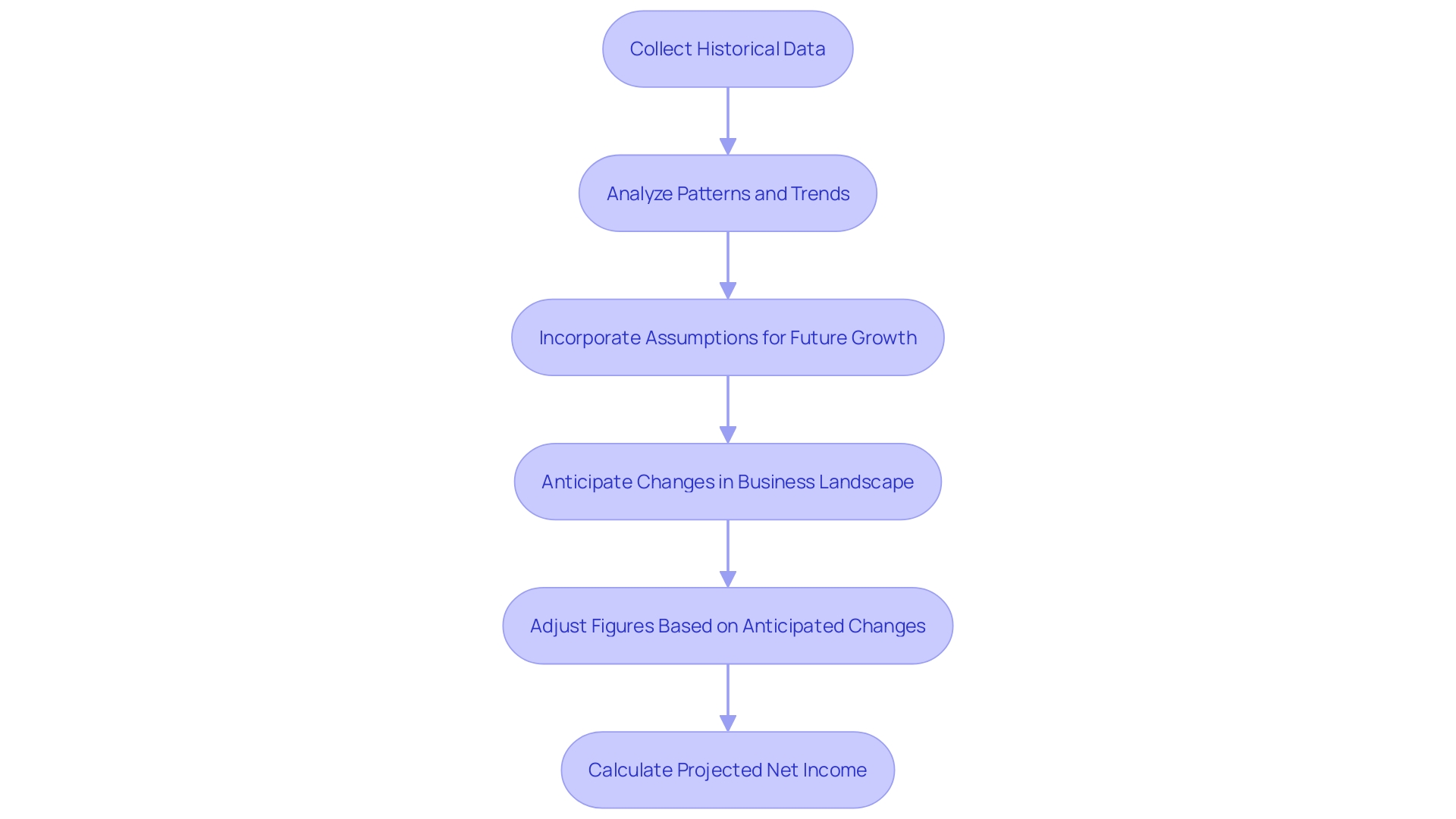
Steps to Create a Pro Forma Balance Sheet
Crafting a pro forma balance sheet is a strategic exercise that requires a blend of historical data analysis and forward-looking assumptions. Begin by reviewing past balance sheets to understand the trends and movements in assets, liabilities, and equity. This historical perspective serves as the foundation upon which future projections are built.
Next, consider the dynamic nature of your business assets; for example, if your startup recently invested in significant equipment, like a $1,500 laptop, this outlay transitions from liquid cash to a tangible asset on your balance sheet. These kinds of changes are critical to capture accurately.
For liabilities and equity, the process involves projecting future changes based on past patterns, current financial strategies, and anticipated business activities. If you operate a single-member LLC, ensure the correct representation of the owner's equity. Should your business structure be an S-Corp, label this section as 'Shareholders' equity' to maintain clarity.
The goal is to give every dollar a job, as advocated by budgeting systems like YNAB, which stress the importance of intentionality in financial planning. Your pro forma balance sheet should reflect this level of detail and purpose, helping to pave the way for intentional growth and financial stability.
Adjust the balance sheet components for any expected shifts in the economic landscape or operational changes. A thorough understanding of new reporting requirements, as highlighted by the IASB's initiative to standardize operating profit calculations, will ensure your pro forma statements meet current standards and provide valuable insights.
Finally, synthesize these elements to compose a projected balance sheet that not only serves as a financial blueprint for your company but also stands up to scrutiny from investors and financial institutions assessing your company's creditworthiness and potential for growth.
Steps to Create a Pro Forma Cash Flow Statement
Crafting a pro forma cash flow statement is a fundamental exercise that enables businesses to foresee their cash position in the future. The process begins with a thorough examination of historical cash flow patterns. By scrutinizing past cash inflows and outflows, one can discern the rhythm of business operations.
The next step is to project future cash flows, which involves making educated assumptions based on the gathered historical data. These projections are refined further by considering potential changes in the business landscape, such as market trends or economic shifts.
As noted in the case of companies since 1987, the practice of creating cash flow statements has been essential for transparency. The cash flow statement is divided into operating, investing, and financing activities. By focusing on operating cash flows, businesses can measure their efficacy in generating cash through core operations, which is a sign of good financial health.
For instance, a firm with positive cash flow from operations can sustain itself without external funding, a situation that every business aspires to achieve.
Recent financial wisdom, as reported on January 18, 2024, underscores the importance of liquidity. Financial planners now advocate for larger emergency funds post-pandemic, highlighting the necessity for businesses to maintain robust cash reserves. This reinforces the value of a meticulously prepared cash flow statement in managing liquidity efficiently.
In essence, the cash flow statement is not just a record but a strategic tool for business planning. It captures all cash movements, from daily operations to investment activities, providing a clear picture of financial health and operational efficiency. The statement of change in equity, or the statement of retained earnings, complements this by detailing the financial decisions affecting shareholder value, such as dividends and retained earnings.
Together, these financial documents guide businesses in maintaining a steady cash flow, which is the lifeblood of any operation, as emphasized by experts in the field. Without a healthy cash flow, profitability alone cannot sustain a business.
In conclusion, creating a pro forma cash flow statement is not just about projecting numbers; it's about understanding the intricate dance of cash within the business and preparing for future financial stability.
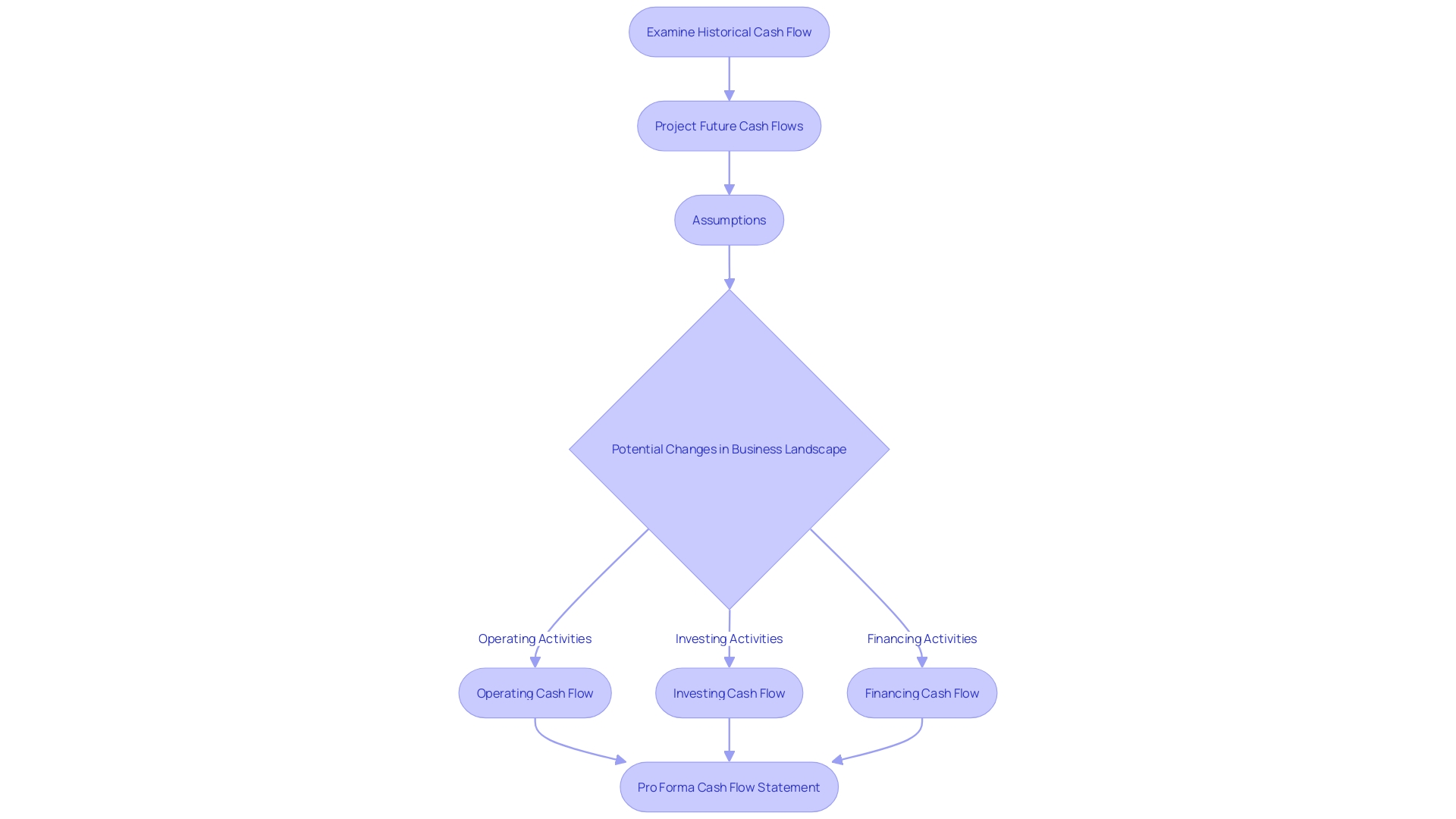
Analyzing Pro Forma Statements
Pro forma financial statements serve as a cornerstone for strategic planning, allowing for a comparison between projected performance and several key benchmarks. This comparison is not just a number-crunching exercise but a strategic tool to gauge how well a company's strategies are performing and to forecast future trends. For example, analyzing dividend potential involves scrutinizing a company's ability to generate profits and distribute dividends to shareholders.
This analysis goes beyond current financials, considering historical performance, industry standards, and strategic advantages to predict future income streams.
The analytical process resembles that taken by a prominent cloud provider planning to expand with new data centers. They shifted focus from hardware management to understanding customer consumption needs, illustrating the importance of aligning financial projections with customer-centric strategies. Similarly, in the blockchain space, projects in the Solana ecosystem highlight the significance of evaluating performance metrics that directly impact user experience, such as data throughput, over more superficial ones like transactions per second.
In a broader economic context, it's crucial to recognize the resiliency of sectors like healthcare amidst economic slowdowns, where necessity drives demand. This sector's performance is a testament to the need for strategic financial planning that accounts for both systemic risks and market uncertainties. The Vanguard Capital Markets Model exemplifies this by using Monte Carlo simulations to forecast asset class returns, factoring in risk factors and economic interrelationships.
Moreover, fiscal policies, such as those implemented post-COVID-19, and monetary policies, including central bank interest rate hikes to address inflation, demonstrate the dynamic nature of financial planning. CFOs must navigate these changes by conducting thorough analyses that incorporate comprehensive data sets and forward-looking projections, as evidenced by the strategic decisions made by companies and industries adapting to evolving market conditions. Whether it's evaluating healthcare sector resilience or anticipating federal policy impacts on financial markets, pro forma financial statements remain a pivotal tool for informed decision-making.

Financial Ratios and Metrics
To effectively gauge a company's financial robustness and operational proficiency using pro forma financial statements, a deep dive into financial ratios and metrics is imperative. These ratios, when calculated and assessed correctly, can unlock a comprehensive understanding of a firm's profitability, liquidity, and leverage positions, and they act as a beacon for the business's overall health.
Understanding a business's liquidity, for instance, is not just about recognizing how much cash is at hand. It involves a meticulous analysis of liquidity ratios that reflect the company's capacity to meet short-term obligations without raising external capital. A thriving example of such prudent financial management is Monday.com, which has astutely balanced its growth with operational efficiency, ultimately achieving an enviable position of free cash flow positivity.
Profitability ratios, too, are not mere reflections of current earnings but are indicative of the company's potential for growth and value maximization. This is especially relevant in sectors like technology and social media, where the pursuit of growth often overshadows immediate profitability, with the end goal being long-term value generation.
When discussing leverage ratios, they reveal how a firm is utilizing debt relative to its equity. This balance is crucial in an ever-changing economic landscape, where the Federal Reserve's interest rate decisions, as well as other macroeconomic factors, could significantly impact a company's cost of debt and investment strategies.
The use of financial ratios transcends the borders of mere accounting; it serves as a universal language that facilitates comparison across industries and sizes. This standardized approach not only helps identify potential red flags but also assists in strategic decision-making, risk assessment, and credit analysis.
In conclusion, financial ratios and metrics are not just tools but are the navigational compass for businesses navigating the complex waters of financial strategy, providing clarity and direction for sustainable growth and operational excellence.
Evaluating Business Potential
Pro forma financial statements serve as a crystal ball into a company's financial future, providing a hypothetical picture of financial health and helping stakeholders envision potential growth trajectories. These forward-looking statements are rooted in assumptions and estimations, which, while not guarantees, offer a framework for strategic planning such as gauging expansion viability or plotting diversification paths. Given the dynamic nature of business environments, these projections are indispensable for aligning short-term actions with long-term objectives and steering the company towards sustainable profitability.
While these financial documents are inherently speculative, they are grounded in the company's operational data and strategic initiatives, serving as a barometer for measuring progress against acquisition goals or adjusting course in response to unforeseen factors. As such, pro forma statements are not just a fiscal exercise but a strategic tool that informs a comprehensive business plan, detailing the necessary steps to achieve organizational goals and objectives.

Real-World Applications of Pro Forma Financial Statements
Pro forma financial statements serve as a powerful beacon for businesses, illuminating potential futures and enabling strategic decisions. They are indispensable for securing financing, as they provide lenders with a snapshot of future revenue and profitability under various scenarios. For entrepreneurs seeking to attract investors, these statements offer a compelling narrative of growth potential and financial stability, making them a critical element of the investment pitch.
Moreover, when evaluating mergers or acquisitions, pro forma financial statements afford companies the ability to project post-transaction financials, highlighting synergies and potential value creation. Beyond transactional contexts, they play a pivotal role in guiding companies through expansion plans, allowing for the assessment of new ventures or market entries with a detailed financial lens.
In the competitive landscape, a robust business model, underscored by sustainable practices and social responsibility as demonstrated by Ag's inclusion in the UN Global Compact, can resonate powerfully within these financial forecasts. This forward-looking perspective was exemplified by the former Governor of New Hampshire and Cabletron Systems co-founder, recognized for transformative leadership and effective governance.
In the world of finance, as detailed by ProPublica's endorsement by Warren Buffett, a strong business model — akin to that of Wells Fargo — can be effectively communicated through pro forma statements. Such endorsements not only elevate a company's profile but also cement its financial projections as credible and attractive.
To ensure the reliability of these projections, a Quality of Earnings (QOE) report can be crucial. It delves into the enterprise value, adjusting for non-recurring events, and offers a more nuanced view than traditional audits. It's a document that captures the essence of a company's financial health, shedding light on operational cash flows and shareholder value changes.
Pro forma statements, underpinned by QOE insights, thus become more than mere financial documents; they are a strategic tool that can influence the trajectory of a business, aligning long-term goals with the realistic appraisal of current and future financial states.
Common Uses and Benefits
Pro forma financial statements serve as essential tools for businesses to navigate the complexities of modern financial management. They are not mere projections but strategic instruments that aid in various critical aspects such as budgeting and forecasting. An expense budget, for instance, is a comprehensive list that encompasses all necessary payments for project creation, which might include labor, materials, and services.
It provides a detailed view of the project's true cost, taking into account not only the direct creation costs but also associated expenditures such as publicity and insurance.
Strategic planning also leverages the insights from pro forma statements. By analyzing the cash flow statement—a fundamental component of financial reports—the health and operational efficiency of a business are revealed. This statement meticulously records every cash inflow and outflow, offering a window into whether a business is self-sustaining through its operations or dependent on external financial aid.
Risk management is another domain where pro forma statements prove invaluable. The banking sector, exemplified by M&T Bank's rigorous adoption of Clean Code standards for software development, highlights the significance of maintaining high-quality operational practices to prevent costly risks like security breaches and compliance failures.
Performance evaluation is yet another area benefited by these financial statements. The statement of change in equity, or the statement of retained earnings, provides a granular look into how a company's equity changes over time, reflecting decisions that affect shareholder value, such as net profits, losses, and dividend distributions.
Lastly, pro forma financial statements are critical for communicating financial health and projections to stakeholders. They offer a digestible format of complex financial data, as evidenced by the curated collection of financial reports that illustrate how to effectively communicate such information. As companies like Reddit move toward IPOs and industries like banking transition to digital platforms, the ability to present clear and accurate financial projections becomes ever more crucial.
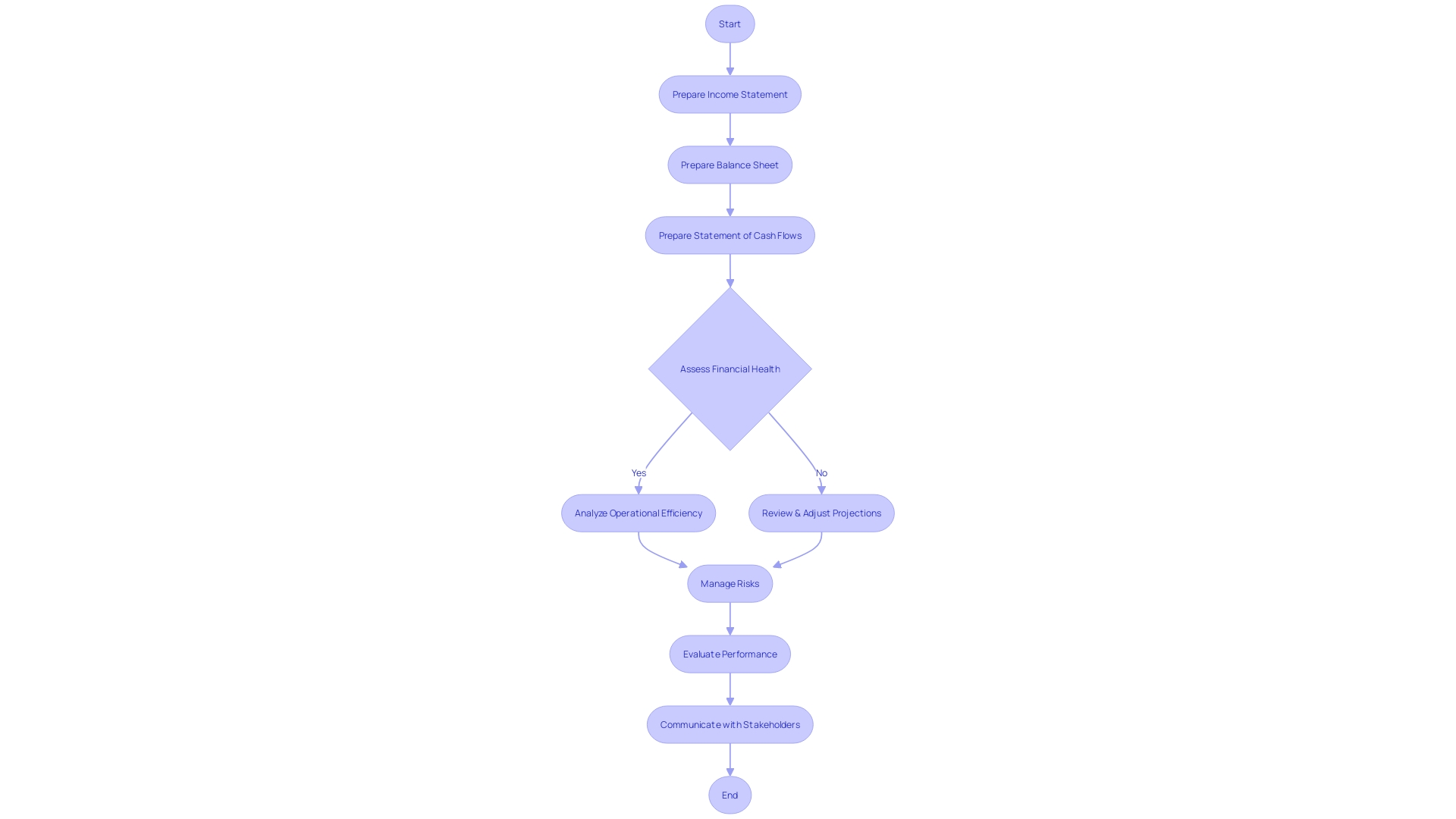
Regulatory Considerations
Crafting pro forma financial statements requires careful attention to regulatory demands and accounting principles, ensuring the fidelity and clarity of the financial forecasts. For instance, software developers like Consensys, navigating the burgeoning digital-asset economy, underscore the need for regulations that grasp the nuances of their operation. These developers, ranging from large entities to small-scale projects, are now confronting the challenge of overhauling their practices to align with new, intricate reporting mandates.
Likewise, the importance of cash flow reporting is paramount, with its role in financial statements being essential for investor insights, as underscored by recent legislative moves such as the Consolidated Appropriations Act, 2023, which mandates investor-friendly disclosures for complex financial products like RILAs.
Moreover, the cash flow statement's significance is further highlighted by its consistent appearance as a primary area for financial restatements and the observed deficiencies in internal controls over its reporting. This statement is vital for assessing an entity's ability to generate future net cash flows, fulfill financial obligations, and return cash to investors. It also provides a transparent view of a company's reliance on operational income versus external financing, contributing to a comprehensive understanding of its financial stewardship and stability.
Transparency and compliance are not just about satisfying legal requirements—they are about maintaining investor trust and ensuring the financial statements reflect true economic reality. As financial markets continue to evolve with technological advancements, the role of compliance and the adaptation of regulations become increasingly crucial, as noted in the historical progression of technological adoption in the U.S. financial markets. In this dynamic landscape, the compliance function's role in safeguarding against violations and protecting shareholder interests has never been more critical, as evidenced by the SEC's emphasis on the compliance function's importance over the last two decades.
In light of these aspects, it's clear that when constructing pro forma financial statements, businesses must do more than just comply with regulations; they must adopt a forward-thinking approach that anticipates the impact of their financial reporting on all stakeholders and the broader financial ecosystem.
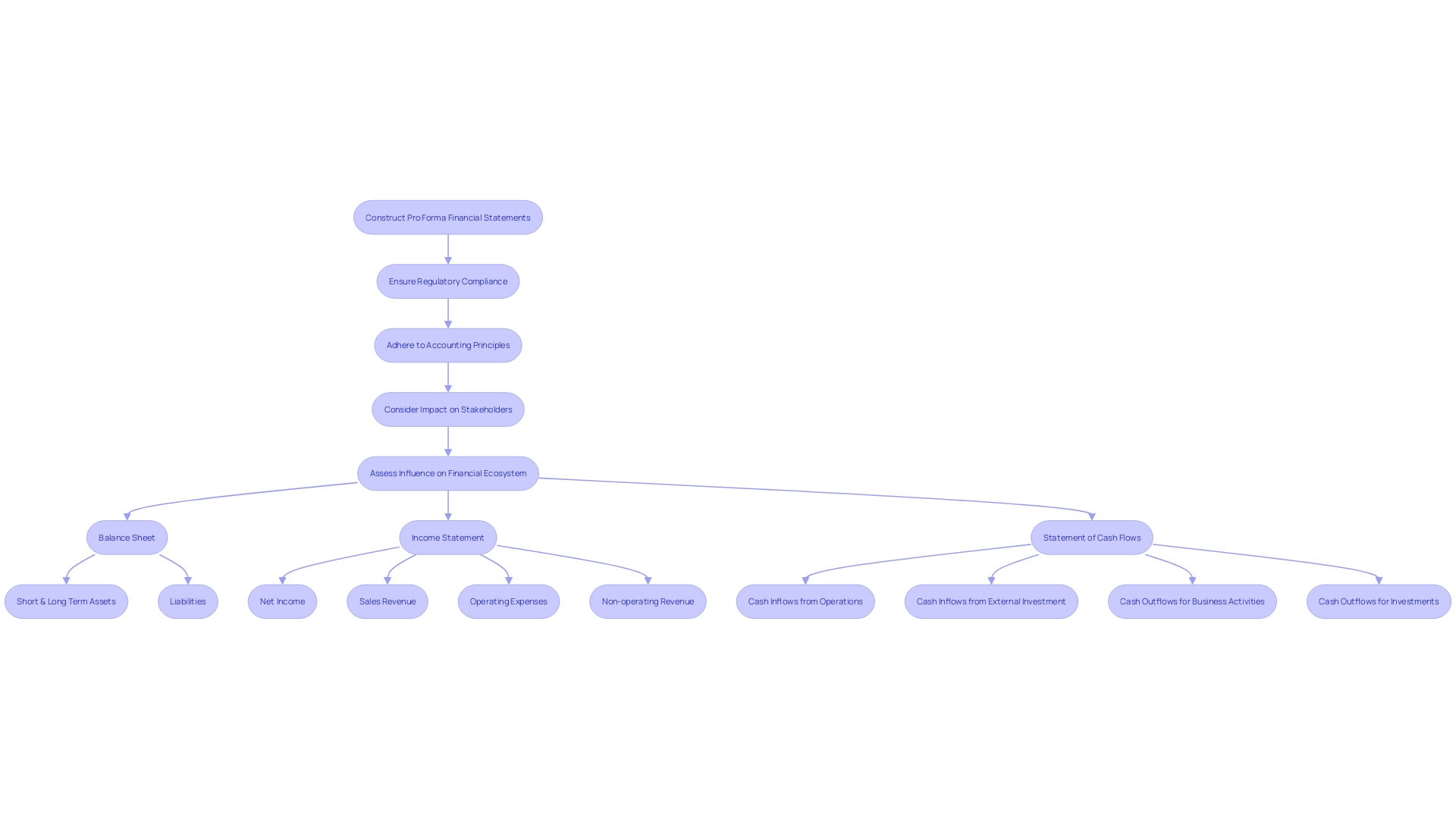
Best Practices for Accurate Forecasting
Creating reliable pro forma financial statements is a nuanced process that requires adherence to certain best practices to ensure their accuracy and usefulness. The foundation of a credible pro forma is realistic assumptions that are based on solid data and a thorough understanding of the business environment. For instance, Intuitive Surgical (ISRG) has maintained its leadership in robotically assisted surgery through meticulous attention to system performance and surgeon training, which are likely factored into their financial projections.
Realistic assumptions are critical because they underpin the entire forecast, influencing both short-term operational planning and long-term strategic decisions.
A thorough sensitivity analysis complements these assumptions, allowing companies to anticipate potential variations and prepare for various scenarios. For example, Equinix's alleged manipulation of OpEx and CapEx underscores the significance of transparency in financial practices. A sensitivity analysis could help in understanding the impact of such accounting practices on financial projections.
Regular updates to projections are also imperative, as they reflect the latest market conditions and internal changes. This dynamic approach to forecasting was exemplified by the growth of ISRG's system placements outside the US, suggesting that regular updates to projections would capture such expansion trends.
Expert advice is another pillar of best practice, offering an external perspective on the company's forecasts. KPMG's involvement with Microsoft, for example, highlights the importance of professional guidance in financial planning. Expertise can help in navigating complex tax laws and financial reporting standards, ensuring that pro forma statements are both compliant and strategically sound.
Lastly, a meticulous review and validation of the results ensure that the pro forma statements accurately represent the company's financial outlook. As financial statement fraud becomes more sophisticated, as noted in recent news, this step becomes increasingly important for maintaining the integrity of financial forecasts.
By integrating these best practices—realistic assumptions, sensitivity analysis, regular updates, expert advice, and thorough review—businesses can strengthen the credibility of their pro forma financial statements, which in turn serves as a cornerstone for sound financial planning and strategy.

Conclusion
Pro forma financial statements are powerful tools for businesses, enabling strategic decision-making and planning for future financial performance. These forward-looking statements help companies anticipate the impact of decisions, manage risks, and make informed choices about investments and operations. There are three primary types of pro forma financial statements: the pro forma income statement, which forecasts revenue, expenses, and net income; the pro forma balance sheet, which lists assets, liabilities, and shareholders' equity; and the pro forma cash flow statement, which outlines cash inflows and outflows.
Creating accurate pro forma financial statements involves analyzing historical data, making well-informed assumptions, and adjusting for anticipated changes. Analyzing pro forma statements involves comparing projected performance to benchmarks, evaluating financial ratios and metrics, and assessing business potential. Pro forma statements have real-world applications, such as securing financing, attracting investors, and evaluating mergers or acquisitions.
Crafting pro forma financial statements requires attention to regulatory demands and accounting principles. Best practices for accurate forecasting include using realistic assumptions, conducting sensitivity analyses, regularly updating projections, seeking expert advice, and thoroughly reviewing and validating results. In conclusion, pro forma financial statements are essential tools for strategic financial planning and decision-making.
They provide businesses with a clear view of potential financial outcomes, enabling them to navigate complexities, anticipate risks, and pursue growth opportunities. By leveraging the power of pro forma statements, CFOs can confidently steer their companies towards long-term success.




